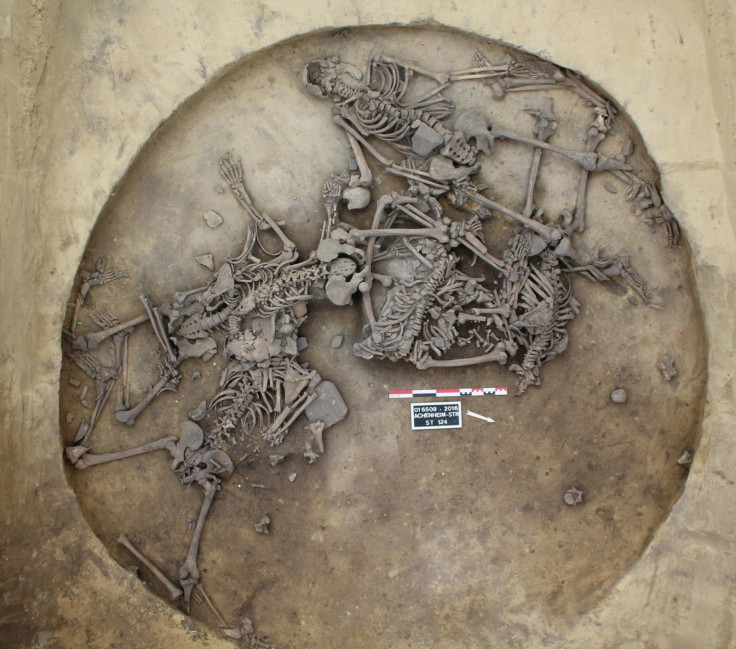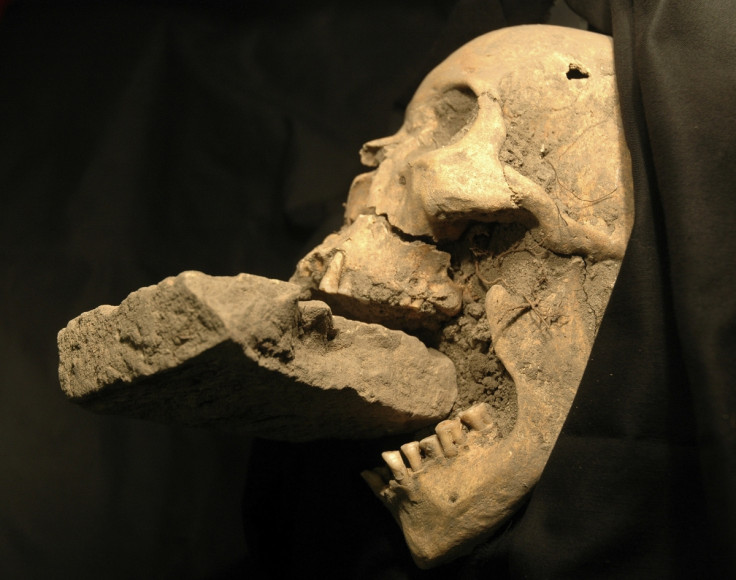From boiled brains to witch burnings: The most gruesome discoveries made by archaeologists
Bloody violence goes back centuries as grisly discoveries show.

Violence and bloody conflicts have permeated human societies since their origins. Archaeologists probably know that better than anyone. Over the years many grisly discoveries have been made showing multiple brutal ways in which people have killed and tortured each other throughout history.
To make your blood curdle for Halloween, IBTimes UK has come up with a (non-exhaustive) list of some of the most chilling finds ever brought to light by archaeological research.
Cannibalism among Neanderthals
This is one of the most recent macabre discoveries by prehistorians. Research in the Belgian caves of Goyet has suggested that Neanderthals that lived there some 45,000 years ago may have butchered and eaten their peers after they had died.
Prior to this, there had been evidence of cannibalistic practices among Neanderthal groups at archaeological sites in Spain and France. Published in Scientific Reports, the recent study also showed that the Belgian group of Neanderthal also used the bones of the deceased to create tools – a particularly gruesome method to get rid of their dead relative's bodies.
Mass burials and bloody conflict in Europe
In June 2016, archaeologists have unearthed in Northern France remains of six individuals in northern France, whose cadavers had seemingly been thrown into a deep pit without much care. The excavation was conducted by a team from the National Archaeological Research Institute (Inrap) at the request of the French state. It focused on more than 300 silos – pit structures used in the past to store grains and cereals.
The entrances of the silos were all heavily protected by fortifications, suggesting that the people who first built the silos lived in troubled times, between 4,400 and 4,200 BCE and the discovery of the skeletons confirmed that. The available evidence suggest that six individuals were thrown together without ceremonial burial and sustained multiple fractures during some sort of conflict.

Another macabre detail retained the archaeologists' attention: the bones of three severed limbs and a complete forearm were recovered next to the skeletons. They were probably cut off from unknown bodies and thrown in the pit with the corpses.
The find suggests that the Neolithic era saw the emergence and multiplication of bloody war-like conflicts. First known records of mass conflicts and massacres date back to between 10,000 and 12,000 years ago in Sudan and Kenya. But in recent years, archaeologists have uncovered a larger number of sites where massacres occurred in Europe. A mass grave in Talheim, Germany, is perhaps the most famous example, with a whole community wiped out in a violent struggle around that period.
Boiled human brains
Finding bones and teeth fossils is not uncommon, but getting access to ancient humans' brain does not happen everyday. In 2010, an archeological excavation of a Bronze Age layer in a tumulus near the Western Anatolia city Kütahya revealed fire affected the populations that lived there 4,000 years ago. Indeed, burnt human skeletons and charred wooden objects were unearthed. But the most interesting and surprising discovery for scientists was that inside of the cracked skulls, they observed undecomposed brains, scorched and boiled in their own juice.

These are some of the oldest brains ever found. The researchers explain that the lack of moisture and oxygen in the environment due to the fire that killed these individuals helped prevent brain tissue breakdown.
The scientific value of this find is inestimable. The level of preservation could help look for neurological disease or tumours and even signs of degenerative disease to learn more about the pathologies that affected our ancestors.
Teenage 'witch' burnt alive
Medieval times was not one of the best era to be a young woman in Europe. Many ended up burnt at the stake after being accused of witchcraft. Some may have been as young as 15 years old.
One of the most recent and dramatic discoveries was made in 2013 in Italy by archaeologists from the Pontifical Institute of Archaeology at the Vatican. The remains of a girl aged between 15 and 17 were found and analysed and they revealed that she had died after being burnt – although it is not possible to say if she was alive when she was set alight. Her death was dated to between the 9<sup>th and 15<sup>th century.

The irreverent way in which she was buried suggests her contemporaries executed her because they believed she was a witch. She was indeed violently thrown into a pit and was found in a strange position, with her head leaning on the wall.
Exorcising vampires with bricks
The sight was particularly gruesome: In a mass grave of 16th-century plague victims on the Venetian island of Nuovo Lazzaretto, a female skeleton was found with a brick shoved in its mouth. A number of researchers have said this may have been the first vampire burial known in archaeology, a way to make sure the woman did not rise from the dead to attack the livings.
This hypothesis was however controversial in the field as many archaeologists believe the brick had nothing to do with exorcism but may have instead accidentally fallen into the skull's mouth.

Other 'vampire graves' have been found in countries across Europe, with high-profile cases discovered also in Poland and Bulgaria. Brick-shoving was not the only protective method used against potential 'vampires' – bodies have been discovered with a sickle placed over their necks to decapitate them if they tried to rise while others had their heads removed and placed between their legs.
© Copyright IBTimes 2025. All rights reserved.






















